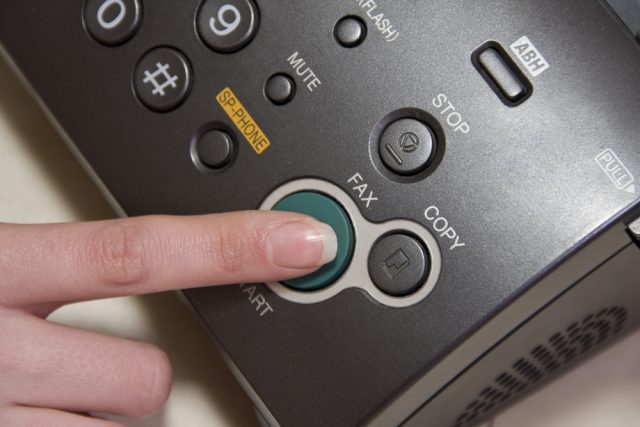Keep the faith with fax

It’s easy to assume that faxing has no place in today’s digitalized workplace. When email and Instant Messaging apps are so established and familiar, the idea of typing in a fax number, feeding a document into a machine, and then having to wait beside that machine to print out a response for you, sounds, at best, quaint: and at worse, slow, inefficient and unsecure.
But fax has evolved and continues to underpin vital operational processes across a range of sectors. The ongoing importance of timestamping plus the advent of cloud in particular means that whether it’s finance: exchanging the details for buying a house: or sending and receiving critical and confidential healthcare documents, fax still has a significant contribution to make in the day-to-day running of an organization.
Ofcom and the future of fax
In November last year, UK communications watchdog Ofcom launched a consultation on the future of faxing in which it proposed changes to existing rules so that UK telecom operators would no longer be required to provide fax services under their universal service obligation (USO).
According to Ofcom, fax has become increasingly outdated. Furthermore, as telecom operators upgrade the networks used to deliver faxes, there is no guarantee that fax services would work in the same way.
But fax is very much with us
It might therefore come as a surprise that the fax is still very much with us. One in six NHS Trusts in the UK were found to still be using fax machines in 2022, despite former health secretary Matt Hancock’s call in December 2018 for a complete phase-out of their use by April 2022 in favor of secure email instead. While this is still a reduction from the 9000 fax machines used across the NHS in 2018 (source: Royal College of Surgeons), that fax has hung in there and that staff continue to use it despite the availability of newer competing technologies is an indication of its value as a trusted tool for certain tasks.
In 2020, my company eFax polled 1001 senior IT and business decision-makers in large enterprises, small to medium-sized businesses (SMEs) and public sector organizations to gain a greater understanding of the cloud-based electronic faxing market and its dynamics.
We found that the number of fax users in organizations is far higher than you’d think. Over half of the sample -- 54 percent -- had between 6 to 50 users; a full fifth even claimed that there were 51 or more fax users in their organization. Fax usage within businesses was also expected to increase in over 37 percent of sampled businesses.
When it comes to fax, 35 percent use cloud-based fax systems, while 31 percent use a combination of cloud and traditional faxing. Only 15 percent of the sample remained wedded to their traditional fax machine. Faxing is more suited to documentation such as contracts, tenancy agreements, company accounts, financial documents and patient records than email, and thus it’s understandable that 68 percent of the sample saw fax remaining for at least the next five years.
Fax will exist for years to come
Fax remains central to many businesses and their operations. It underpins many organizations by enabling the secure communication of legally binding. Business users attest that the biggest driver for their ongoing use of fax is its security (41 percent). This is followed by its cost efficiency (36 percent), compliance to GDPR (34 percent) and the increasing importance of cloud storage (23 percent).
Fax, and especially digital cloud fax, is a tried and tested technology. Cloud fax providers have developed an infrastructure that provides business users with a private, secure and legally compliant way to transmit confidential or business-critical data to clients, vendors, partners, and other third parties.
Faxing also remains secure against human error or social engineering attacks. By remaining consistently off the radar of hackers, cybercriminals are less likely to target documents that are faxed compared to those sent over email. These reasons are why fax will retain its crucial role at the heart of many businesses.
Furthermore, making the move away from analogue solutions to cloud faxing can help businesses save money and embrace enhanced convenience and functionality. Organizations that adopt cloud-based service tools for their faxing needs allow the encryption of e-document transmission, security controls to allow or deny their transmission, and overall organization-wide capabilities and access without risking documents being lost or stolen.
It's for these reasons that faxing continues to be a reliable, secure up-to-date communication method that is in use around the world. Let’s keep the faith when it comes to fax.
Image credit: Nomadsoul1/depositphotos.com
Scott Wilson is Vice President at eFax.
